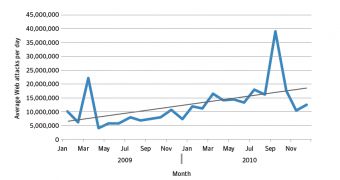Billions of dollars are lost each year by people and companies as a direct result of cyberattacks, shows a study made by Symantec.
The exact figures show that $114 billion is the financial cost of these crimes, but the sums are even larger when it comes to the time related expenses which occur due to these experiences. The value of the time lost to recover from an attack is $247 billion, which means that the fight against cybercrimes is even more costly for the global economy than the fight against drugs, which sets the world back a cool $288 billion each year.
The Norton Cybercrime Report 2011 reveals that 69% of the adult internet users have been a victim of this type of activities at least once in their lifetime.
As technologies around mobile operating systems advance, the threats toward these platforms become more present. The study highlights that 10% of those who prefer mobile devices have experienced the phenomenon, in 2010 the number of vulnerabilities found in these systems increasing by 42%, compared to 2009.
If we were to identify a group of people, which according to the survey are more likely to get duped by hackers, men aged between 18 and 31 are the most probable victims.
Statistics show that viruses and malware are the number one cause, followed by online scams and phishing messages.
“There is a serious disconnect in how people view the threat of cybercrime,” said Adam Palmer, Norton Lead Cybersecurity Advisor.
He also added that “Cybercrime is much more prevalent than people realize. Over the past 12 months, three times as many adults surveyed have suffered from online crime versus offline crime, yet less than a third of respondents think they are more likely to become a victim of cybercrime than physical world crime in the next year. And while 89 percent of respondents agree that more needs to be done to bring cybercriminals to justice, fighting cybercrime is a shared responsibility. It requires us all to be more alert and to invest in our online smarts and safety.”
The figures are not really surprising, as 74% of the participants admitted to not taking the necessary precautions against online threats, while 61% don't use strong passwords to protect their virtual accounts.

 14 DAY TRIAL //
14 DAY TRIAL //